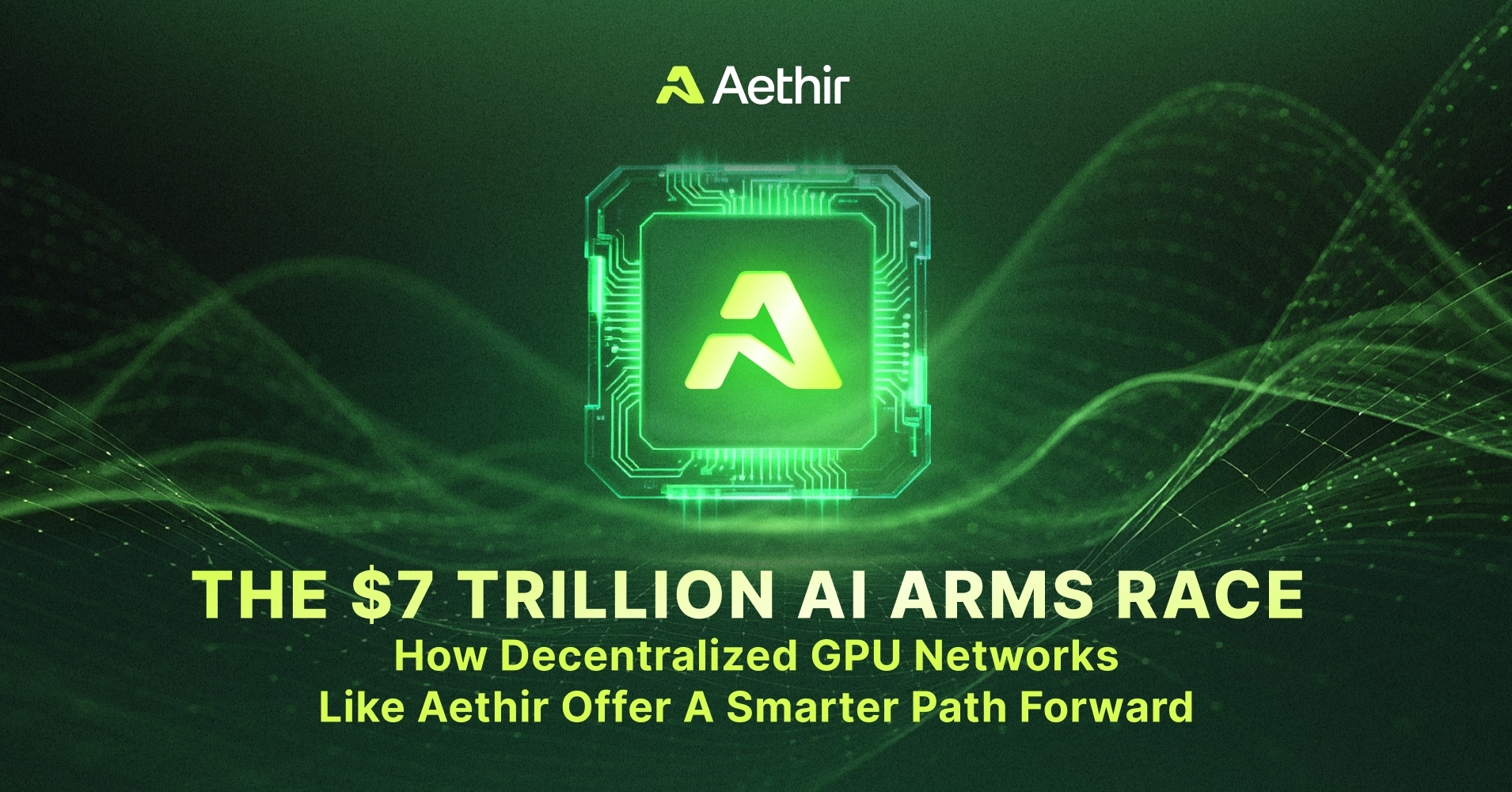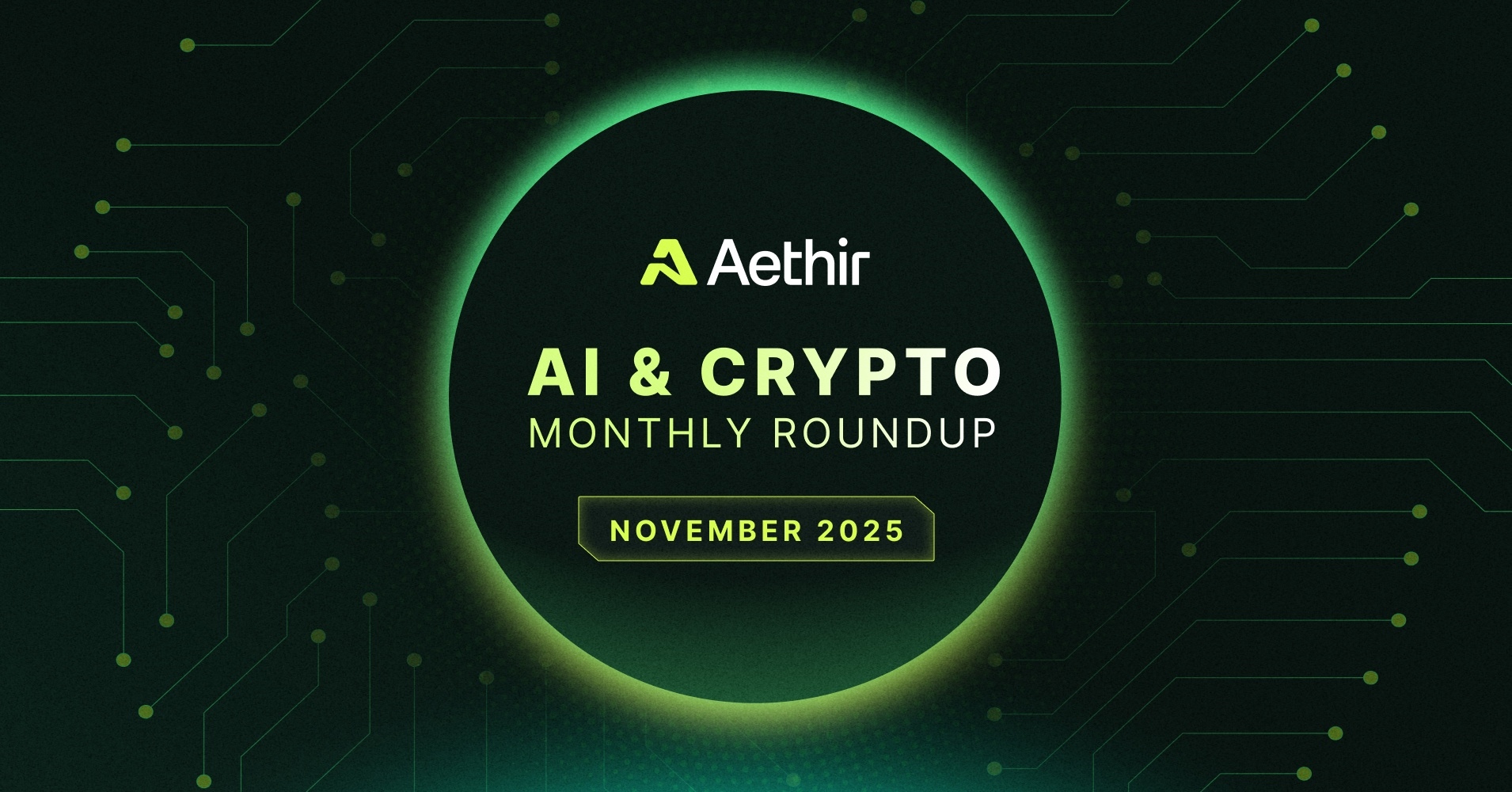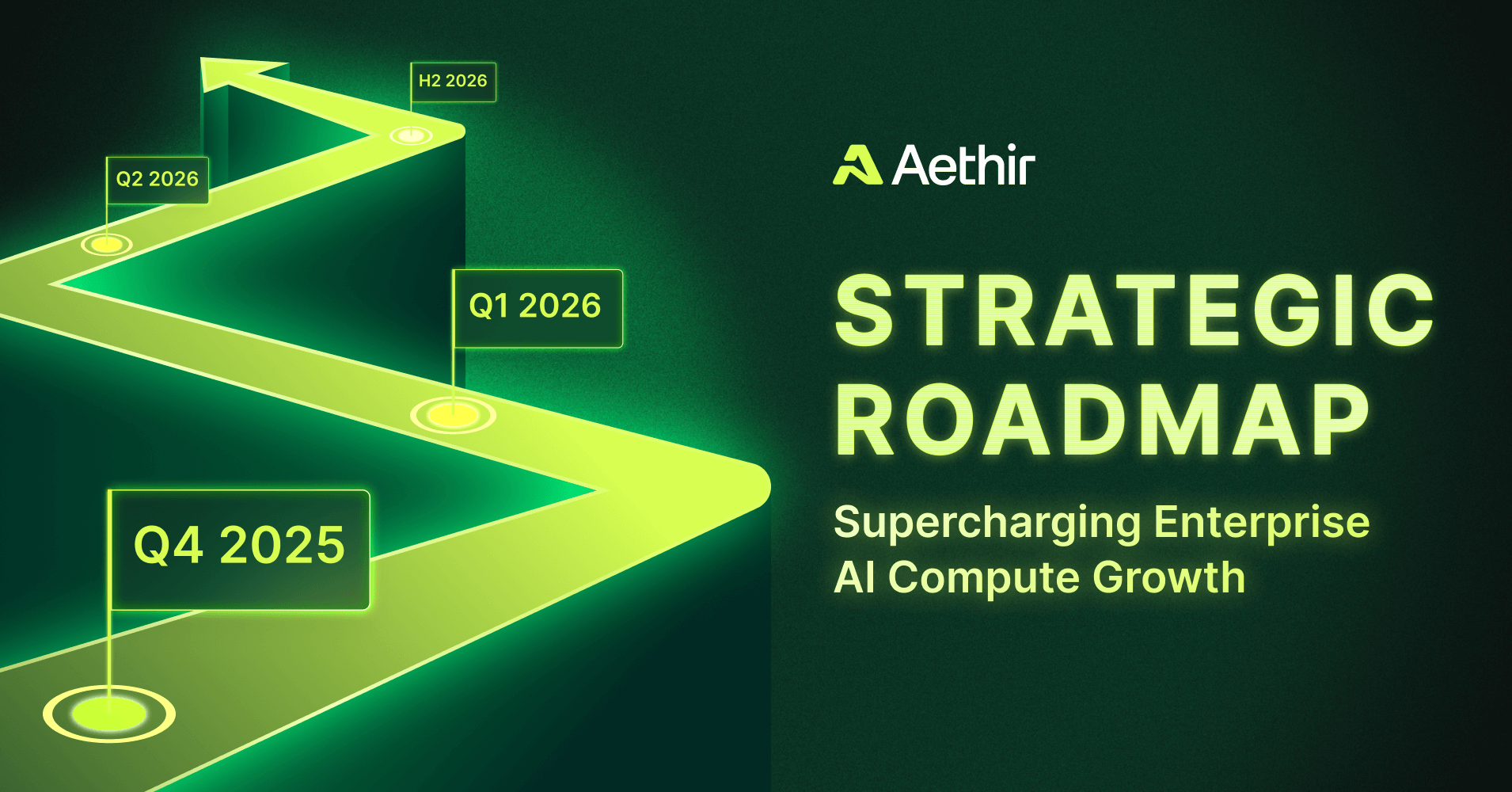Key Takeaways
- Generative Engine Optimization (GEO) is the next generation of online search, powered by AI.
- GEO workloads are highly GPU-intensive, requiring reliable and scalable GPU compute support.
- Aethir’s decentralized GPU cloud is a cost-effective solution that can support GEO for enterprises on a global scale.
Traditional Search Engine Optimization (SEO) is no longer enough to reach your target audiences and consumers. Now, Generative Engine Optimization (GEO) is becoming a must-have for all content strategies, along with AI Overview Optimization (AIO). The two terms are essentially used as synonyms for AI-powered search optimization. Generative Engine Optimization (GEO) is the process of structuring digital content so LLM-powered AI platforms can identify, summarize, and present it in generative search results.
GEO is a new optimization technique that doesn’t rely solely on keywords, links, and metadata. SEO remains essential, but GEO changes the game by optimizing content pieces for AI-driven search engines. The goal of AI-powered search optimization is simple. Content creators need to optimize their pieces so that LLM-powered AI platforms, such as ChatGPT, Perplexity, Claude, and others, recognize them as relevant and high-quality pieces that effectively answer user queries.
The goal is no longer to rank highly in a traditional index, but to be selected, summarized, and surfaced by an LLM, as part of AI indexing in response to a natural language query. To succeed, content creators must use precise language, strategically compile headings to address LLM user queries, and deliver hands-on value to readers. By implementing optimal AI Overview Optimization and GEO content optimization, articles are set to rank in AI engine summaries as reputable sources for specific topics. The future of search is AI-powered and multi-layered. Content creators must optimize for both traditional and AI-driven search engines to effectively reach their target audiences.
However, the Generative Engine Optimization revolution needs ample computing power. All LLM-based platforms and AI agentic solutions rely on vast computational operations that can only be supported by high-performance GPUs. Aethir’s decentralized GPU cloud can provide the computing backbone for the next generation of AI-powered search. Learning how to optimize content for AI search engines is crucial for AI SEO strategies, and it requires adequate computing support.
What Is Generative Engine Optimization (GEO) and Why It Matters
LLM-powered search engines consume massive amounts of GPU compute. On the other hand, producing GEO-friendly content also leverages AI computing and uses Natural Language Search Optimization (NLSO). Synthetic content creation, prompt-engineered pages, and AI-enhanced content production iteration all leverage GPU compute. Both content production and LLM-powered search engines consume computational resources.
As the industry continues to grow and GEO content optimization becomes the new norm in content production and AI-powered search optimization, companies will require more compute for generative AI workloads.
How GEO Is Different from Traditional SEO
One of the key GEO vs SEO differences is the focus on optimizing content for LLM-powered search engines, instead of traditional search engines like Google. That’s why GEO content pipelines for enterprises require decentralized GPU solutions for AI optimization and generative search content strategies.
LLM-powered content pipelines are already generating, scoring, embedding, and deploying content at scale. AI search engine optimization isn’t just a trend. It’s a new paradigm in content production that must be integrated into contemporary content strategies alongside traditional SEO.
Why GEO Workloads Require Powerful GPU Infrastructure
These are the key GPU-intensive, AI-powered Generative Engine Optimization pipeline workloads:
- Prompt-based content generation via LLMs like GPT-5, Claude, and DeepSeek.
- Embedding creation for semantic indexing and Retrieval-Augmented Generation.
- Synthetic content generation for A/B testing and variant deployment.
- Vector database storage and AI-based scoring for internal search optimization.
All of these workloads rely on AI inference and require fine-tuning of the output to achieve optimal results. The AI output often goes through multiple iterations before it can be utilized for official business purposes. These iterations require additional compute resources. Unlike traditional web content, which is written once and cached, GEO content is iterative, evolving, and adaptive. Feedback loops and real-time model inputs drive it.
As more companies integrate AI search engine optimization-friendly content approaches, the need for reliable, cost-effective GPU computing to support GEO workloads will continue to increase. Integrating GEO is a question of AI infrastructure and not just marketing tactics.
Challenges of Running GEO on Traditional Cloud Providers
GEO lives and dies on rapid generate-evaluate-ship loops. When launches or news breaks, you need to spin up localized generations, test variants, and push updates in minutes, not days. That demands elastic, low-latency GPU inference across regions.
Traditional hyperscale cloud compute providers, such as AWS, can’t simply spin up more GPUs for hardware-intensive AI workloads. Centralized clouds must physically onboard additional GPUs into their massive data centers to increase compute capacity for their clients. This often leads to GPU supply bottlenecks, particularly during periods of high network congestion. Hyperscale data centers struggle with real-time scalability and cannot efficiently handle rapid increases in AI workload, making them unsuitable for large-scale AI-powered search optimization, generative AI workloads, and AI-driven content ranking tasks.
The reality is that centralized cloud providers aren’t optimized for Generative Engine Optimization workloads and AI workloads in general. GEO requires dynamic GPU compute resources that can adapt to diverse market conditions, including periods of high network activity that can fluctuate rapidly.
Each stage of the GEO pipeline —embedding, generation, reranking, and safety—experiences spikes at different times and in different geographies. The infrastructure must scale with those bursts and place compute near users and crawlers.
These are some of the key characteristics of GEO content optimization workloads:
- Bursty: Content generation may spike in response to product launches, news cycles, or algorithm changes.
- Latency-sensitive: Real-time personalization and chatbot-driven SEO demand low-latency inference.
- Global: AI search engine optimization campaigns target diverse markets, requiring compute close to the edge.
Centralized clouds, on the other hand, have multiple key limitations, making them a poor choice for GEO workloads:
- GPU access is limited and often oversubscribed.
- Latency is higher, especially when serving users far from centralized data centers.
- Costs are unpredictable due to rigid pricing models.
- Vendor lock-in stifles experimentation and multi-model deployment.
This is why using traditional clouds for AI SEO strategy integrations and workloads can prove costly, inefficient, and it can limit enterprise scalability. To circumvent these limitations, companies need access to versatile compute resources that leverage decentralized GPU cloud infrastructure.
How Aethir’s Decentralized GPU Cloud Powers GEO Pipelines
To get listed in AI search engine answers, content creators need to leverage AI tools and iterate on content to fit LLM user queries and directly answer questions. This means clarity and simplicity. AI search engines, on the other hand, must effectively browse published content and select the most relevant pieces to answer user queries. Both sides of the AI search engine optimization pipeline need reliable, secure, and scalable compute support. AI infrastructure for content creators needs to be versatile and fit for fluctuating generative AI workloads.
Aethir’s decentralized GPU cloud offers an innovative approach to cloud computing, leveraging distributed GPU infrastructure. Our compute resources are provided by Cloud Hosts, located in 94 countries worldwide, with 430,000+ high-performance GPU Containers, including thousands of NVIDIA H200s and GB200s.
Unlike traditional cloud models, Aethir uses a distributed network architecture, purpose-built to support AI inference, which is essential for Generative Engine Optimization and AI SEO strategies:
- Elastic, scalable GPU infrastructure on demand in 94 countries worldwide.
- Edge-based AI inference, bringing compute closer to users and minimizing latency by serving clients with the physically closest available GPUs. Edge computing for GEO workloads is essential in times of high network traffic.
- Lower operational costs, leveraging the underutilized GPU supplies provided by independent Cloud Hosts.
- No vendor lock-in, enabling model-agnostic experimentation and deployment.
Benefits of GEO for Enterprises and Content Creators
GEO for enterprises and marketing automation unlocks tremendous advantages:
- Content creators can utilize embedding generation, content scoring, and LLM integrations for on-demand inference.
- Deployment of region-specific personalization using GPU compute closer to target markets with advanced AI SEO strategies.
- Hosting lightweight AI endpoints that serve GEO content variants in real-time.
- Adapting quickly to changes in LLM behavior or updates to generative engine ranking logic.
Versatile, cost-effective GPU compute is of critical importance for GEO workloads because they leverage AI functionalities. Aethir’s decentralized GPU cloud is already supporting 150+ enterprise clients from across the AI, Web3, and gaming industries with premium, scalable GPU compute. We have the hands-on experience and infrastructure capabilities to support the evolution of Generative Engine Optimization with AI-friendly cloud computing at scale.
Powering AI-Driven Discovery with Aethir’s Decentralized GPU Infrastructure
AI-powered search optimization uses LLM-powered search engines and AI-driven content ranking to reach users. Instead of overoptimizing for SEO ranking, GEO caters to AI search engines by optimizing content to pop up as user answers in ChatGPT, Claude, and other LLM-powered AI platforms. As AI-assisted discovery continues to dominate user behavior, Generative Engine Optimization will become a core pillar of brand visibility.
Content must be both practical and readable for both AI engines and humans. AI search engine optimization visibility depends on semantic relevance and structural clarity, prompting content creators to craft clear and functional pieces that can effectively answer real user queries on AI search engines.
How Can Businesses Prepare for AI-Driven Content Discovery?
Aethir’s decentralized GPU cloud enables companies to integrate GEO strategies and support advanced LLM-powered platforms that are essential for GEO content optimization. We can support GEO-native content engines that scale globally, along with AI pipelines that adapt to evolving search models. Aethir is the best GPU cloud for AI workloads because we adapt to our clients’ needs and dynamically scale compute according to their enterprise requirements.
Ready to optimize for the AI search era? Aethir’s decentralized GPU cloud gives you the scalability and speed to dominate Generative Engine Optimization rankings.
Discover more about Aethir’s decentralized GPU cloud for AI, Web3, and gaming enterprise use cases in our official blog section.
Companies interested in exploring Aethir’s GPU infrastructure capabilities for integrating GEO for enterprises can learn more about our GPU-as-a-service here.
FAQs
What is Generative Engine Optimization (GEO)?
Generative Engine Optimization (GEO) is the process of structuring digital content so that LLM-powered AI platforms can select and present it to answer user queries on the platform. It’s the next generation of AI SEO strategies. GEO is AI search engine optimization, leveraging AI-powered content ranking.
How is GEO different from SEO?
GEO doesn’t depend on keyword density, metadata, and backlinks. Instead, it’s focused on content clarity and value for LLM-powered generative search engines.
Why do GEO workloads require so much GPU compute?
AI SEO strategies require extensive high-performance GPU compute support because it leverages AI-powered search engines that depend on vast amounts of computational operations.
How does Aethir’s decentralized GPU cloud support GEO?
Aethir’s decentralized GPU cloud can support GEO for enterprises with our globally distributed network of 430,000+ high-performance GPUs across 94 countries worldwide. Our service prices are significantly lower compared to centralized clouds, and we provide ultra-low latency thanks to our edge computing architecture.
Can GEO work without AI infrastructure?
Unfortunately, GEO can’t perform without reliable and scalable GPU AI infrastructure support because of its immense hardware requirements to support millions of concurrent AI search engine users.
How will AI search engines change SEO in 2025?
LLM-powered search engines will significantly alter the SEO landscape in the near future due to the widespread global adoption of AI infrastructure by content creators and everyday users. As more users rely on AI search engines like ChatGPT, DeepSeek, Claude, and Perplexity, the prominence of AI SEO strategies is expected to continue increasing.
Is GEO relevant for small businesses?
Yes, GEO content optimization can be highly beneficial for small businesses, enabling them to reach their target audiences by implementing AI SEO strategies and appearing in user query answers in LLM-powered search engines.






